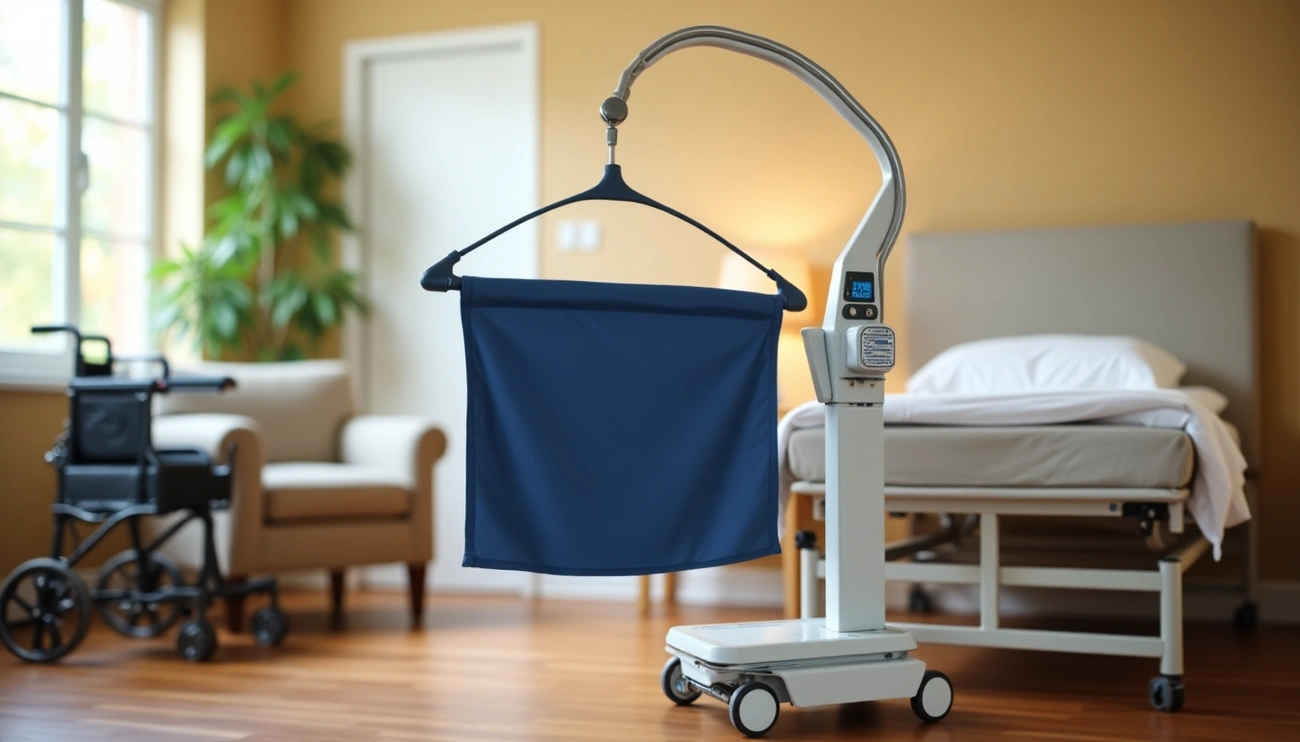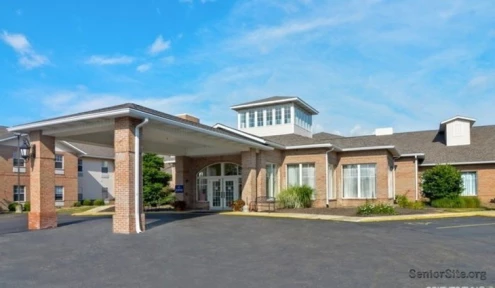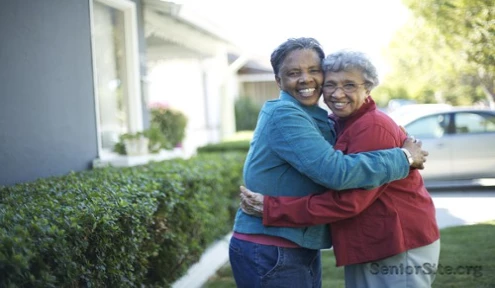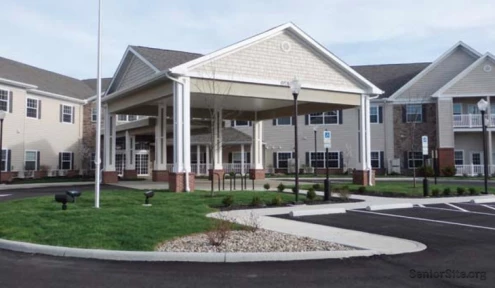Helping aging loved ones choose appropriate living arrangements presents significant challenges for families nationwide. A national poll shows 88% of Americans aged 50 to 80 want to remain in their own homes as long as possible, yet only 15% have considered the necessary modifications to make aging in place viable.
The statistics highlight a troubling reality: 70% of seniors aged 65 or older will eventually need some type of long-term care, with the average stay exceeding two years. While many prefer aging in place, various senior housing alternatives exist to accommodate different health requirements, financial situations, and lifestyle preferences.
Financial considerations vary considerably across options. Independent living communities typically cost between $2,000 to $3,500 monthly, while assisted living facilities average around $4,500 per month. Senior living arrangements range from maintenance-free communities where residents focus on hobbies and social activities to specialized care environments offering personalized assistance.
This guide examines 9 types of senior living options available in 2025, providing families with essential information to make informed decisions about their loved ones’ future living situations.
Aging in Place: Modifying Your Current Home
Staying in their own homes represents the ideal living arrangement for most seniors. A recent survey shows 77% of Americans aged 50 and older want to remain in their current residences for as long as possible. This preference for “aging in place” has sparked growing interest in home modifications that create safer, more accessible living environments.
Aging in Place benefits
The advantages of remaining in a longtime home extend beyond convenience. Familiar surroundings provide significant psychological and emotional benefits, creating comfort that’s difficult to replicate elsewhere. As one expert notes, “Nine times out of 10, people want to stay in their home as they age. That’s where they’ve spent a good part of their life and made memories”.
Aging in place allows seniors to maintain autonomy and follow their own schedules, proving empowering for many older adults. Staying home typically costs less than transitioning to assisted living facilities or nursing homes. The U.S. Department of Housing and Urban Development reports approximately 20% of adults over 65 own their homes outright, eliminating mortgage expenses from their monthly budgets.
Home modifications for aging in place
Creating a senior-friendly home requires thoughtful planning and strategic changes. Safety modifications should prioritize fall prevention, since falls represent the leading cause of injury among older adults. Essential bathroom upgrades include:
- Installing grab bars near toilets and in showers/tubs
- Adding walk-in showers or transfer benches
- Placing non-slip mats in wet areas
- Considering raised toilet seats or comfort-height toilets
Lighting improvements play a crucial role as well. Experts recommend brighter bulbs, additional fixtures in high-traffic areas, and night lights to guide midnight walks. Notably, 70% of adults over 50 report feeling comfortable using technology to help them age at home, with smart home innovations becoming increasingly valuable tools for independence.
Other important modifications include removing trip hazards like rugs, creating wider pathways between rooms, installing lever-style door handles instead of knobs, and ensuring important items remain within easy reach.
Costs of aging in place
Despite being more affordable than facility care, aging in place still involves significant expenses. Basic home modifications—including grab bars, improved lighting, and lever-handled doorknobs—typically cost up to $10,000. More extensive renovations like removing steps, widening hallways, adding ramps, and installing walk-in showers can reach $100,000.
The ASHA estimates basic housing costs (property taxes, insurance, utilities, maintenance) total approximately $3,725 monthly for a median-priced $400,000 home. Professional home healthcare services add substantially to this figure—homemaker services average $3,994 monthly for 44 hours of weekly care.
For those with limited resources, financial assistance options exist. Medicare may cover home health services during skilled nursing care periods, whereas Medicaid potentially covers certain home-based services for low-income seniors. Veterans might qualify for homemaker services through the Department of Veterans Affairs, and the Federal Housing Administration’s Home Equity Conversion Mortgage program provides another potential funding source.
Technology adoption continues growing, with 80% of older Americans already owning at least one device enabling aging at home. This expanding “AgeTech” market is projected to reach $120 billion by 2030, offering solutions ranging from medical alert devices to smart home systems.
Accessory Dwelling Units (ADUs) for Seniors
Accessory dwelling units are emerging as a popular option bridging the gap between aging in place and relocating to specialized facilities. These compact, self-contained living spaces provide seniors with independence while maintaining proximity to family support networks.
What are ADUs?
Accessory Dwelling Units (ADUs) are secondary, self-contained residential spaces built on the same property as a primary residence. Commonly called “granny flats,” “in-law suites,” or “senior cottages,” these units feature their own entrance, kitchen, bathroom, and living area. ADUs appear in several forms:
- Detached backyard cottages
- Attached additions with separate entrances
- Interior attic or basement apartments
- Above-garage apartments
- Converted garage spaces
These versatile structures once common before suburban expansion declined due to restrictive zoning regulations. Recently, states including California, Oregon, Washington, New Hampshire, and Vermont have enacted legislation requiring cities to permit ADU construction, addressing housing affordability concerns and evolving family needs.
Benefits of ADUs for senior living
ADUs allow seniors to maintain independence while remaining close to support networks. For older adults valuing autonomy but needing nearby family, these structures offer an ideal balance. This arrangement preserves privacy and dignity for aging parents with their own separate entrance, while family members stay just steps away for assistance.
ADUs can substantially reduce elder care expenses by enabling family members to provide support instead of paying for facility care. With assisted living facilities costing between $4,000 and $8,000 monthly, an ADU investment represents significant long-term savings.
The customization potential makes ADUs particularly valuable for seniors with changing mobility needs. Unlike many existing homes, these units can be specifically designed with aging-friendly features:
- Step-free entryways and wider doorways
- Accessible bathrooms with grab bars and walk-in showers
- Non-slip flooring and improved lighting
ADUs also strengthen intergenerational connections. A 2018 AARP survey reports 67% of adults would consider living in an ADU to be close to someone while maintaining separate space. This arrangement fosters meaningful relationships between grandchildren and grandparents while preserving everyone’s independence.
ADU costs and regulations
Construction costs vary widely based on type, size, location, and design. Detached new construction ADUs typically range from $180,000 to $300,000, though simpler conversions can cost as little as $40,000. A typical 576-square-foot one-bedroom ADU costs approximately $218,000.
Despite this upfront investment, ADUs often increase property values significantly. A $218,000 ADU investment can add approximately $288,000 to property value—a $70,000 gain before considering potential rental income. Homeowners may also benefit from tax deductions on mortgage interest and property taxes related to the ADU.
Regulations regarding ADUs continue evolving. California made ADUs legal statewide in 2017 and subsequently streamlined fees and the approval process. Between January 2017 and June 2019, Los Angeles alone issued nearly 12,000 ADU building permits. Other municipalities allow ADUs with various restrictions—some limit short-term rentals, require owner occupancy of the main dwelling, or specify that ADUs must house family members or caregivers.
Before proceeding with an ADU project, homeowners should consult local land use and permitting offices to understand applicable regulations, required permits, and associated fees. This research ensures compliance while maximizing potential benefits of this increasingly popular senior living option.
55+ Active Adult Communities
55+ communities have emerged as a thriving segment of senior living options in recent years. These active adult communities cater to older adults seeking independent lifestyles with resort-style amenities and robust social environments.
Features of 55+ communities
These neighborhoods create environments specifically tailored to senior preferences. Most offer resort-like amenities, with 64% of potential residents expressing interest in health and fitness facilities. The communities typically feature:
- Clubhouses and community centers for gatherings
- Swimming pools and fitness centers
- Golf courses, tennis courts, and pickleball facilities
- Walking trails and outdoor spaces
- Low-maintenance or maintenance-free exteriors
Housing options vary widely, from single-family homes to townhouses, condominiums, and apartments. Interior spaces feature accessible layouts, while HOA fees generally cover exterior maintenance like landscaping and snow removal. This arrangement allows residents to enjoy retirement without the burden of home upkeep.
55+ communities now increasingly incorporate public-facing venues like coffee shops, dining facilities, and farmers markets to encourage intergenerational interaction, addressing potential concerns about age segregation.
Social life in 55+ communities
Social connection stands as a primary appeal of these active adult communities. Research indicates 53% of respondents cite their desire for community living as the top reason for moving to a 55+ neighborhood. Most communities employ Lifestyle Directors who facilitate events, organize outings, and help residents connect with neighbors.
Social opportunities include:
- Special-interest clubs ranging from cooking to painting
- Organized day trips and group activities
- Regular community events and gatherings
- Volunteer opportunities
Studies confirm these social networks significantly impact resident wellbeing, showing that strong support networks buffer against negative effects of aging, improving general health, mood, and cognitive functioning. As one resident notes, “Feel connected to your community by participating in social clubs, special-interest groups, and volunteer activities”.
The social dynamics aren’t without challenges, however. Approximately 40% of residents acknowledge unwritten social rules, and some report feeling excluded if they don’t conform to community norms.
Cost considerations for 55+ living
The financial structure of 55+ communities differs significantly from other senior living options. Monthly costs typically include mortgage payments (if applicable) plus HOA fees covering community amenities and exterior maintenance. Monthly expenses generally range from $1,500 to $4,000, though this varies considerably by location and amenity level.
In Florida’s upscale developments, single-family homes may cost between $600,000 and $930,000, while more affordable options exist throughout the country. Unlike assisted living or continuing care communities, 55+ neighborhoods don’t include healthcare services or meals in their monthly fees.
For many residents, the value proposition centers on lifestyle benefits rather than care services. Despite HOA fees that can reach $800 monthly, occupancy rates for active adult rental communities are projected to remain in the mid-90% range through 2025, indicating strong demand. Many residents find these communities offer good value—the cost of living in well-designed 55+ neighborhoods often aligns with national averages, making them accessible to a broad range of retirees.
Independent Living Communities
Independent living communities have gained significant popularity among seniors seeking freedom from home maintenance while enjoying active social environments. These residential options, sometimes called retirement communities, serve adults aged 55 and older who prioritize quality living experiences over household management responsibilities.
Independent living amenities
These communities provide comprehensive service packages designed to enhance residents’ daily lives. Most independent living facilities include:
- Restaurant-style dining with chef-prepared meals (offered in 80% of communities)
- Weekly housekeeping and laundry services (available in 85% of communities)
- Transportation to medical appointments, shopping, and entertainment (provided by 90% of communities)
- Fitness centers, swimming pools, and exercise classes (present in 70% of communities)
- Social activities, clubs, and organized outings
- Beauty salons and barber shops (found in 90% of communities)
- Libraries and computer rooms (available in 85% of communities)
Many communities also feature outdoor recreational spaces, game rooms, and arts and crafts workshops. All maintenance concerns—from changing light bulbs to landscaping—become the community’s responsibility, allowing residents to focus on enjoyable activities.
Who should consider independent living?
Independent living works best for seniors who:
- Remain self-sufficient with minimal care needs
- Don’t require assistance with daily activities like bathing or medication management
- Experience isolation at home and seek social interaction
- Want relief from home maintenance responsibilities
- Desire more convenient, leisure-focused lifestyles
This housing option primarily attracts active older adults valuing community connection without sacrificing independence. Unlike assisted living, independent living doesn’t provide regular medical care or personal assistance, though some communities offer access to these services when needed.
Independent living costs
The median monthly cost for independent living in the United States in 2025 is $3,065, approximately 40% less than assisted living. Prices typically range from $1,500 to $6,000 monthly depending on several key factors.
Location significantly impacts pricing, with communities in major metropolitan areas and desirable neighborhoods commanding premium rates. Apartment size and floor plan similarly affect monthly fees, with larger units costing more.
Many communities offer bundled pricing that includes rent, utilities, amenities, and some services. Others provide à la carte options for meals and housekeeping, allowing residents to customize their experience based on preferences and budget.
While independent living costs may initially appear substantial, they often represent good value compared to maintaining a private home plus paying separately for similar services and amenities.
Assisted Living Facilities
Assisted living facilities fill the critical space between independent living and nursing homes, serving seniors who require daily support while maintaining their autonomy. This senior housing option has expanded considerably, delivering personalized care in residential environments.
Assisted living services
Assisted living communities offer comprehensive support targeting activities of daily living (ADLs). These facilities typically provide:
- Personalized assistance with bathing, dressing, and grooming
- Medication management and regular health monitoring
- Three meals daily plus snacks, often accommodating special diets
- Housekeeping, laundry, and maintenance services
- Social and recreational activities to promote engagement
- Transportation for medical appointments and outings
- 24-hour security and emergency call systems
Each resident receives a customized care plan based on their specific needs. The level of assistance can be adjusted as circumstances change. Most communities maintain at least one medical professional on staff, typically a certified nurse practitioner, available 24 hours daily.
Ideal candidates for assisted living
Assisted living best serves seniors who:
Need some assistance with daily tasks but don’t require intensive medical care. These individuals typically struggle with personal care, medication management, or household responsibilities. Many residents have chronic health conditions requiring regular monitoring but not 24-hour skilled nursing.
Potential residents undergo an assessment to ensure their needs match available services. Recent studies show quality of life and resident satisfaction rank as the most prioritized domains in published literature on assisted living quality. Seniors in assisted living communities frequently report feeling more secure and socially connected compared to living alone.
Assisted living pricing
The nationwide median monthly cost for assisted living in 2025 is $5,676, marking a significant increase from previous years. This figure varies substantially based on location, apartment size, and required services. Some communities charge additional fees for specialized care beyond basic services.
Monthly fees typically cover rent, utilities, meals, housekeeping, and basic personal care. Memory care services add approximately $800-$1,200 per month.
Payment comes primarily from private sources, including:
- Personal savings and retirement accounts
- Social Security benefits
- Long-term care insurance
- Veterans’ Aid and Attendance benefits
- Life insurance policy conversions
While Medicare generally doesn’t cover assisted living, Medicaid offers limited assistance in 44 states for eligible low-income seniors. The average length of stay in assisted living communities ranges from 2.5-3 years, highlighting the importance of financial planning for this senior living option.
Continuing Care Retirement Communities (CCRCs)
Continuing Care Retirement Communities (CCRCs) distinguish themselves from other senior living options by providing care across every stage of aging within a single campus environment.
What is a CCRC?
CCRCs, also called Life Plan Communities, serve adults typically 55 and older with a complete range of care services that adapt as health needs change. These facilities combine independent living, assisted living, and skilled nursing care in one location, eliminating the need for disruptive relocations later in life. The average CCRC operates with 231 independent living units, 34 assisted living beds, and 70 skilled nursing beds.
Most seniors enter CCRCs while still active and healthy, intending to remain throughout their retirement years. The core concept focuses on allowing residents to stay in place as their health requirements change—moving only to another care level within the same community if necessary.
Benefits of CCRCs for seniors
CCRCs primarily offer peace of mind through guaranteed access to higher care levels when needed. This proves especially valuable for couples with different healthcare needs, as one spouse can maintain independence while the other receives more intensive care.
These communities foster social connections through organized activities, clubs, and wellness programs. Research indicates CCRC residents experience fewer hospitalizations and emergency visits compared to seniors in other living arrangements. Only 5% of residents in communities with integrated primary care die in hospitals, versus 27% nationally.
Financial predictability represents another key advantage. With Type A contracts, monthly fees remain stable even when residents require higher care levels, simplifying long-term retirement budgeting.
CCRC entrance fees and monthly costs
The financial structure includes two main components:
- Entrance fees ranging from $40,000 to over $2 million, with the average around $402,000. These upfront payments fund facility maintenance and secure future care access.
- Monthly service fees averaging $3,555, covering meals, housekeeping, utilities, and access to amenities and healthcare services.
Three primary contract types affect overall costs:
- Type A (Life Care): Higher entrance fees guarantee stable monthly rates regardless of care needs
- Type B (Modified): Lower entrance costs with discounted rates for additional care
- Type C (Fee-for-service): Minimal upfront fees but market rates apply for extra services
Many CCRCs offer refundable entrance fee options, with 50% and 90% refunds being most common. A portion of CCRC fees may qualify as tax-deductible medical expenses, providing potential tax benefits.
Senior Co-Housing Communities
Senior co-housing represents a distinct approach to elder living that focuses on resident participation and shared decision-making. This housing model combines private residences with communal spaces, creating member-driven communities for older adults seeking social connection.
What is senior co-housing?
Senior co-housing features privately owned homes clustered around shared spaces designed to encourage social interaction. These communities typically include 20-40 residences with connected walkways and common lawns. Each community centers around a common house containing amenities such as a large kitchen, dining area, laundry facilities, and multi-purpose rooms.
These communities differ from traditional senior living options primarily through their governance structure. Residents actively participate in community decisions, collectively manage the property, and share various responsibilities. Most co-housing communities cater specifically to adults over 55, creating environments where seniors with similar interests and goals can thrive.
Advantages of co-housing for elderly
Co-housing particularly excels at addressing isolation and loneliness among seniors. Communal meals, a fundamental feature of these communities, provide regular social interaction, while shared activities foster meaningful relationships that improve overall health outcomes. Research confirms co-housing positively affects aging in place “by preventing social isolation, providing informal services, security, independence, and improving older adults’ quality of life”.
Additional practical benefits include:
- Economic efficiency through shared resources and reduced maintenance costs
- Natural support networks where neighbors informally assist one another
- Environmental sustainability through shared spaces and resources
- Improved safety with neighbors who notice when someone needs assistance
Cost and setup of co-housing
Establishing a senior co-housing community typically begins with founding residents collaborating on design and development decisions. Once completed, residents purchase individual homes that become part of a homeowner’s association managed by the community itself.
Some communities offer more affordable options. Silver Sage Village, America’s first senior co-housing community, includes units managed by the Boulder Housing Authority as part of the city’s Permanently Affordable Housing Program. Co-housing generally costs approximately half as much as traditional senior living alternatives.
Across the United States, approximately 170 established cohousing communities exist, with about 105 more in development and 20 under construction. Among these, roughly a dozen exclusively serve seniors, though this segment represents the fastest-growing category in co-housing.
Rental Senior Living Communities
Rental senior living communities continue gaining popularity across the United States, offering housing solutions without the substantial upfront investments required by other senior living options. These arrangements provide flexibility that appeals to older adults seeking straightforward retirement living options.
What are rental senior communities?
Rental senior living communities operate on a monthly fee structure without requiring large entrance fees or buy-ins. These communities allow seniors to lease apartments or homes while accessing amenities and services through their regular payments. Most provide maintenance-free living, scheduled transportation, and social activities. Unlike Life Plan Communities with entrance fees, rental communities typically don’t offer discounted rates for higher levels of care if residents’ needs change.
Pros and cons of renting vs buying
Pros of rental communities:
- No large entrance fees that can reach hundreds of thousands of dollars
- Freedom to relocate or change communities when desired
- No risk of losing substantial entrance investments if circumstances change
- Relief from maintenance responsibilities including cleaning and repairs
- Some communities offer seasonal rentals or month-to-month arrangements
Cons of rental communities:
- Monthly rates increase annually, with recent growth between 6.5% and 8.5% in 2025
- Market rates apply for higher care levels when needed
- No equity accumulation or return on investment potential
- Reduced financial predictability for long-term planning
Rental community pricing
State median costs for independent living in rental communities range from $2,250 to $5,650 monthly in 2025. Vermont ranks as the most expensive state for independent living, while South Dakota offers the most affordable options. Several factors influence rental rates:
- Geographic location and local cost of living
- Unit size and type (studios to two-bedrooms)
- Included amenities and services
- Community luxury level and features
Rental senior living typically costs about 40% less than assisted living, though pricing varies considerably. After significant increases in 2023-2024 that peaked above 11% for independent living, rate growth has moderated somewhat in 2025 as operators respond to what industry analysts call “inflation fatigue” among residents.
Memory Care Communities for Dementia and Alzheimer’s
Memory care communities provide specialized residential care exclusively designed for individuals with Alzheimer’s disease and other forms of dementia. As the fastest-growing segment in senior housing, memory care units have increased by nearly 84% to 162,100 units from 2013 to 2023.
What is memory care?
Memory care facilities serve as long-term care environments structured specifically for people with memory impairments. These secure settings create safe, consistent routines to reduce stress and confusion for residents. Memory care can exist as standalone facilities or as specialized “neighborhoods” within assisted living communities, nursing homes, or continuing care retirement communities.
The primary distinction between memory care and other senior living options lies in its specialized focus. Unlike regular assisted living, memory care offers enhanced security features, dementia-trained staff, and targeted programming for cognitive impairment. This specialized environment becomes essential as approximately 6 in 10 people with dementia tend to wander.
Specialized services in memory care
Memory care communities provide distinctive features and services including:
- Staff specially trained in dementia care with higher caregiver-to-resident ratios
- Secured entries and exits with alarmed doors and enclosed outdoor spaces
- Simplified floor plans and environmental designs to reduce confusion
- Therapeutic activities like music therapy, art therapy, reminiscence therapy, and pet therapy
- Sensory stimulation programs and cognitive games tailored to various dementia stages
- Comprehensive assistance with activities of daily living plus medication management
Memory care environments prioritize safety while supporting dignity and independence. Staff receive ongoing training to effectively handle dementia-related behaviors such as wandering, aggression, and anxiety.
Memory care costs
The median monthly cost for memory care in the U.S. in 2025 is approximately $6,450, notably higher than standard assisted living due to specialized care requirements. For nursing home-based memory care, private rooms average $116,800 annually while semi-private rooms cost approximately $104,025.
Most families utilize multiple payment sources including private savings, home equity, Social Security benefits, long-term care insurance, and sometimes veterans benefits. Medicaid may cover some services depending on state programs, although Medicare generally doesn’t cover memory care facilities.
Comparison Table
The table below compares key aspects of the nine senior living options, providing essential information for families weighing different alternatives. Each option carries distinct cost structures, service offerings, and target populations, allowing for direct comparison across critical decision factors.
| Senior Living Option | Monthly Cost Range | Primary Features/Services | Level of Care/Assistance | Target Residents | Special Considerations/Benefits |
|---|---|---|---|---|---|
| Aging in Place | $3,725+ (basic housing costs) | Home modifications, smart technology, safety upgrades | Varies based on needs; can include home healthcare | Seniors wanting to stay in their homes | Familiar environment; potential cost savings; requires home modifications |
| ADUs | N/A (Construction: $40,000-$300,000) | Private living space, customized accessibility features | Family-provided support | Seniors seeking independence near family | Maintains family proximity while preserving privacy; increases property value |
| 55+ Active Adult Communities | $1,500-$4,000 | Resort-style amenities, maintenance-free living, social activities | No medical care provided | Active, independent seniors 55+ | Strong social focus; HOA covers maintenance; no healthcare services |
| Independent Living | $1,500-$6,000 (median: $3,065) | Meals, housekeeping, transportation, social activities | Minimal; no medical care | Self-sufficient seniors seeking community | Freedom from home maintenance; active social life; no medical support |
| Assisted Living | $5,676 (median) | Personal care, meals, housekeeping, medication management | Regular assistance with daily activities | Seniors needing daily support but not full nursing care | 24/7 staff availability; scalable care levels; social activities |
| CCRCs | $3,555+ monthly + $40,000-$2M entrance fee | Comprehensive care levels, amenities, lifetime care guarantee | Full spectrum from independent to skilled nursing | Planning for long-term care needs | Aging in place without relocating; predictable costs with Type A contracts |
| Senior Co-Housing | Approximately half of traditional options | Shared common spaces, communal activities, collective governance | Self-managed community support | Active seniors seeking intentional community | Strong social connections; shared resources; resident-driven governance |
| Rental Senior Living | $2,250-$5,650 | Similar to independent living without large buy-in | Varies by community | Seniors seeking flexibility | No entrance fees; more flexible terms; annual rate increases |
| Memory Care | $6,450 (median) | Specialized dementia care, secure environment, therapeutic activities | 24/7 specialized memory care | Seniors with dementia/Alzheimer’s | Enhanced security; specialized staff training; dementia-specific programming |
Conclusion
Finding the right senior living option requires thorough research and consideration of individual circumstances. The nine options outlined in this guide present distinct advantages for varying health needs, independence levels, and financial situations. Families making these decisions face weighing factors including care requirements, location preferences, and available resources.
Understanding available choices simplifies what initially appears as an overwhelming process. Senior housing options span from minimal intervention approaches like home modifications to comprehensive memory care services. This spectrum allows families to match environments to their loved ones’ specific needs, whether those involve occasional support or round-the-clock specialized care.
Financial considerations remain central to senior living decisions. Monthly costs range from $3,725 for basic home maintenance to $6,450 for memory care services. Several options, particularly Continuing Care Retirement Communities, require substantial entrance fees reaching into millions of dollars. Early financial planning proves essential, as most seniors ultimately need some form of long-term care.
Quality of life should ultimately drive housing choices for aging family members. Each senior deserves living arrangements that preserve dignity while providing appropriate support. The most suitable environment varies significantly between individuals – some thrive in socially active communities while others prefer familiar surroundings with modest adaptations. This guide offers the foundational knowledge needed to evaluate options that best serve each senior’s unique circumstances and preferences.
FAQs
Q1. What are the main differences between assisted living and independent living communities? Assisted living provides personal care assistance and medication management, while independent living offers a maintenance-free lifestyle without medical care. Assisted living is for seniors needing daily support, whereas independent living caters to self-sufficient older adults seeking an active community environment.
Q2. How do continuing care retirement communities (CCRCs) differ from other senior living options? CCRCs offer a full spectrum of care levels on one campus, from independent living to skilled nursing. They typically require large entrance fees but provide lifetime care guarantees, allowing residents to age in place without relocating as their needs change.
Q3. What financial considerations should families keep in mind when exploring senior living options? Costs vary widely, from around $3,725 monthly for aging in place to $6,450 for memory care. Some options require substantial upfront fees. Families should consider long-term care insurance, veterans benefits, and potential Medicaid coverage when planning. Early financial discussions are crucial for adequate preparation.
Q4. What specialized services do memory care communities provide for seniors with dementia? Memory care communities offer enhanced security features, dementia-trained staff, and targeted programming for cognitive impairment. They provide therapeutic activities, sensory stimulation programs, and simplified environmental designs to reduce confusion and support residents with Alzheimer’s and other forms of dementia.
Q5. How do 55+ active adult communities differ from traditional retirement homes? 55+ communities focus on active, independent seniors seeking resort-style amenities and social activities without medical care. They often feature maintenance-free living covered by HOA fees but don’t provide healthcare services. These communities emphasize an active lifestyle and social connections among residents aged 55 and older.












